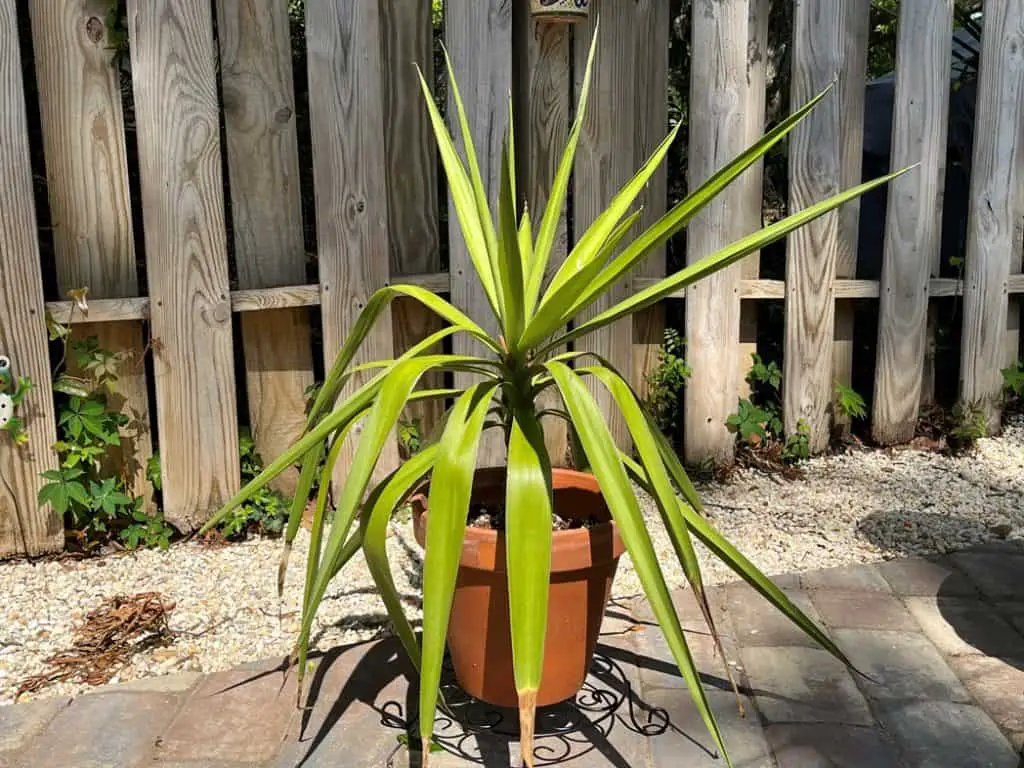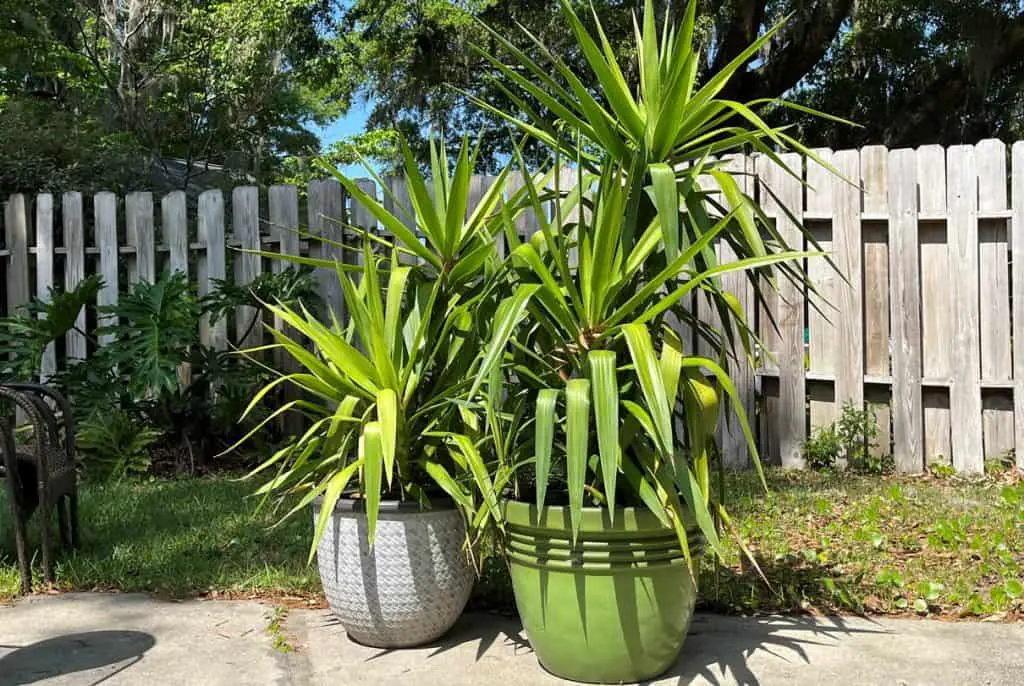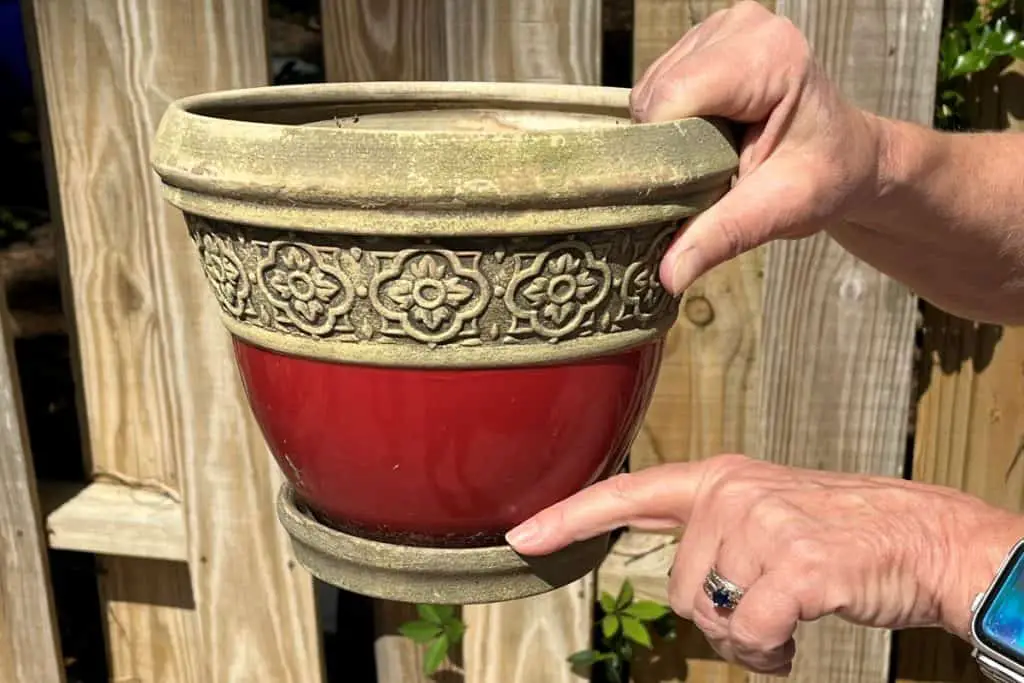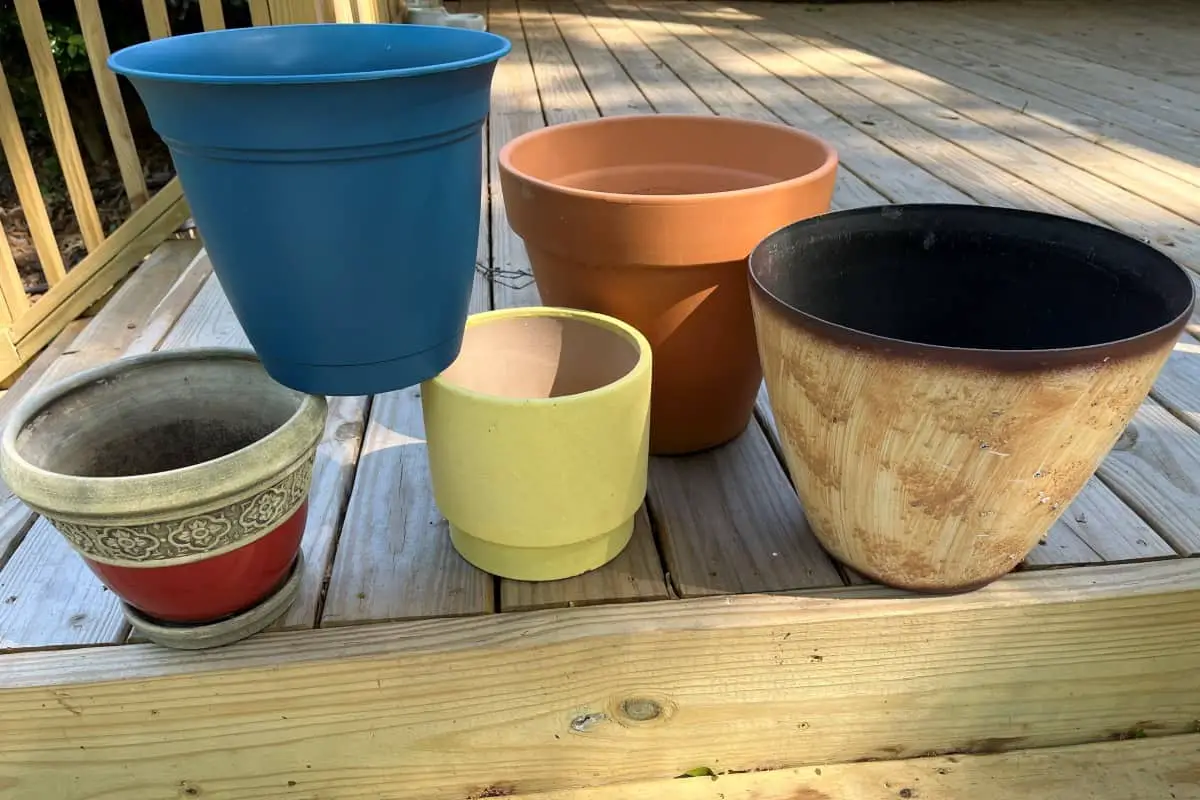What pot to choose for your yucca or any plant can be challenging. There are so many types and styles. In addition, yuccas are susceptible to root rot, so choosing the right pot can be important.
The best pot for yucca is a terracotta pot with a drainage hole. This is because yuccas like dry conditions, and the porous terracotta allows water to evaporate. By allowing the water to evaporate, root rot is minimized. But other pots can be used as well.
Although terracotta pots are the optimum choice for a yucca, they are by no means the end-all. Other pot styles are yucca friendly.

Terracotta Pots Accommodate Yuccas
The breathable terracotta pot is great for the yucca’s roots. Yuccas don’t like to be waterlogged. Too much water is the kiss of death for a yucca. Keep in mind that these are desert plants and are not made for staying wet.
Terracotta pots leach the water away from the roots. They create an arid environment for the yucca. These pots also allow the roots to breathe.
But there is a downside. Because you have the minerals leaching out through the terracotta pot, it causes some white deposits. Many people consider this patina and don’t mind. It can be clean off, but it will continue to occur.
Terracotta pots are susceptible to cracking in colder weather. They also break easily if dropped, which is easy to do since they are pretty heavy. They used to be very inexpensive but have gone up in price.
Hey, you’ll like this one too: How to Pot a Gloriosa or Spanish Dagger
Plastic Pots are a Great Option for any Plant
Many people think that plastic pots are horrible for yuccas. They don’t breathe like a terracotta pot. And a plastic pot doesn’t leach the water through the pot. But plastic pots are fine to use if they are used properly.
The key to a plastic pot is a large drainage hole. Or, if need be, you can have multiple drainage holes in the pot. If you purchase a plastic pot without drainage holes, grab a drill. It’s easy to drill holes in the bottom. You don’t want to get too close to the edge, or you may crack the pot.

These two yuccas are quite large and have spent their lives in plastic pots. They have several holes in the bottom.
Raising a plastic pot or any pot is important to allow the air to circulate around the roots.
The downside to a plastic pot is also the upside. They are lightweight and so easy to move around. Even if you have a large yucca, it can be moved. But that is also a downside. If you have them outside, they are susceptible to the wind blowing them over. However, it needs to be a strong wind since the soil weighs it down.
Plastic pots are inexpensive, and you can go small or large without a considerable investment.
Hey, you’ll like this one too: What Soil is Best for a Yucca
Pots with Built-In Saucers Not Good
The latest rage is pots with saucers attached. It makes it easy to catch the overflow, and they are usually aesthetically pleasing. But beware.
The problem is that the roots are sitting in water. The drainage hole is right up against the saucer. When there’s water in the saucer, it tends to back up into the plant.
Yuccas cannot tolerate sitting in water. They will succumb to root rot. And since root rot can be a silent killer, you may not realize your yucca has it until it’s too late.
Avoid pots with built-in saucers. They may look pretty, but your plant won’t be looking pretty after a while.

Ceramic Pots with Holes are Acceptable
Ceramic pots are the high-end version of plastic pots. They don’t breathe, and they don’t leach water from the roots. But ceramic pots can be used with a yucca. The key is to have a good drainage hole. And make sure the pot is elevated off its saucer if it’s inside. It also should be lifted slightly if it’s outside.
Some pots are a mixture of ceramic and terracotta. It’s still not going to allow the roots to breathe through the pot or water to leach out the side. Once a terracotta pot has ceramic or a glaze, it ceases to be a terracotta pot.
Ceramic pots are beautiful and can accentuate a yucca. But you need to take precautions. If a ceramic pot doesn’t have drainage, don’t buy it. If you have your heart set on the pot, drill a hole or two in the bottom. You’ll need to use a carbide tip drill bit (pour water over the bit while you drill for safety).
Cachepots Need Watching
One trend is putting a pot with a drainage hole into another pot. The second pot is usually decorative. It eliminates the need for a saucer under the plant. It also gives your plant a sleeker look.
But there is a danger with using a cachepot. It’s pretty, but water can accumulate around the roots if you aren’t vigilant. You’ll end up with your plant constantly sitting in water.
Make it a point to wait a minute after you water. This will allow the water to seep through the soil. You must then pull the plant out and empty the cachepot.
Sometimes, a large plant is in a cachepot. It’s not easy to pull out. That’s when a turkey baster comes in handy. Slip it into the cachepot and draw the water out.
Dark Pots Burn Yucca Roots in Summer
Some people like a dark pot or keep their plants in the pot that the nursery sold them in. This can be a problem during hot weather.
Dark colors draw light. That’s why most people wear lighter-colored clothes in the summer. Your plants’ pots are the same. A dark pot will draw an excessive amount of light and therefore heat.
This is a recipe for burning roots. Use light pots. That black pot with the gold trim may be a beauty, but it doesn’t matter if it causes your plant to keel over.
Hey, you’ll like this one too: What Does a Yucca Symbolize
Conclusion
Although the best pot for yucca is a terracotta pot, it’s not always practical. So don’t be afraid of plastic or ceramic pots. Just be sure you have plenty of drainage and lift them slightly off the ground to allow air circulation.

